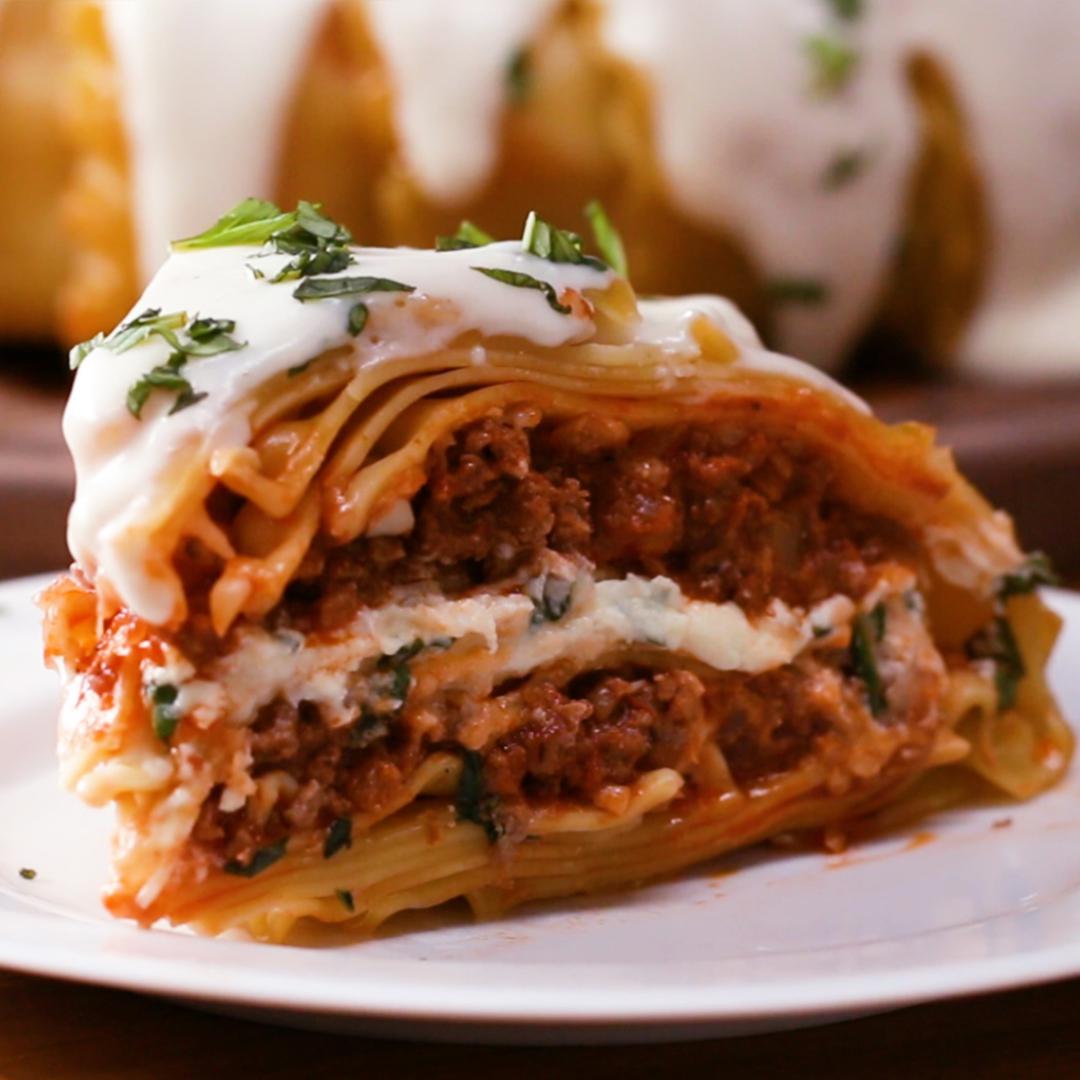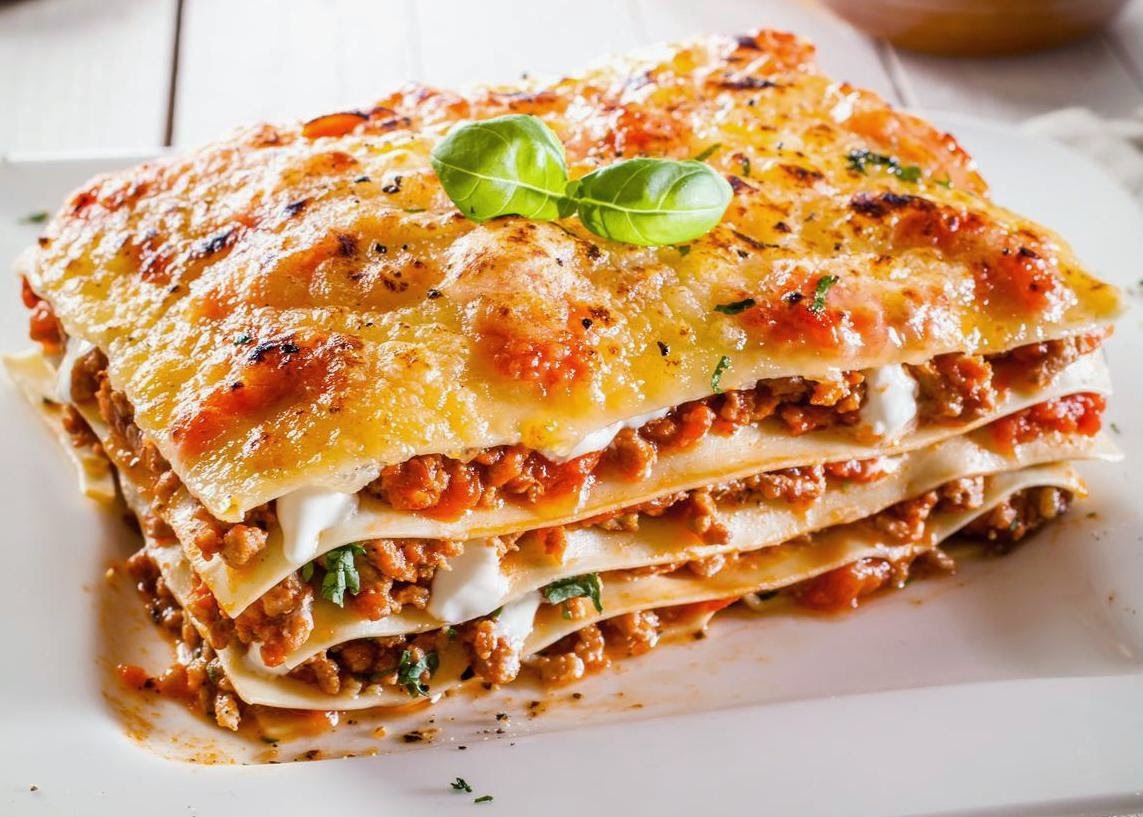Lasagna, a culinary masterpiece originating from Italy, has captured the hearts and palates of food enthusiasts worldwide. This delectable dish, composed of layers of pasta, savory fillings, and a rich sauce, offers a symphony of flavors and textures that tantalizes the taste buds.
In this comprehensive guide, we will embark on a culinary journey, exploring the secrets behind creating an exceptional lasagna recipe. From selecting the finest ingredients to mastering the art of layering and baking, we will provide you with all the knowledge and techniques you need to prepare a lasagna that will impress your family and friends.
Introduction

Lasagna is a delicious, hearty dish that is popular all over the world. It is a type of pasta casserole that is made with layers of pasta, meat, cheese, and vegetables. Lasagna is believed to have originated in Italy in the 14th century.
The name “lasagna” comes from the Greek word “laganon,” which means “sheet of pasta.”Lasagna is a popular dish because it is versatile and can be made with a variety of ingredients. It is also a relatively easy dish to make, which makes it a great option for busy families.
Origins
Lasagna is believed to have originated in Italy in the 14th century. The first recorded recipe for lasagna was found in a cookbook from Naples in 1390. This recipe called for a dish made with layers of pasta, cheese, and eggs.
Over time, lasagna evolved into the dish that we know today, with the addition of meat and vegetables.Lasagna is now a popular dish all over the world. It is especially popular in the United States, where it is often served as a main course at family gatherings and parties.
Ingredients and Variations
Classic lasagna is crafted from a delectable combination of ingredients that harmonize perfectly to create a culinary masterpiece. While the core components remain constant, there’s ample room for variations that cater to personal preferences and dietary restrictions.
The essential ingredients for a classic lasagna include:
- Lasagna noodles: These flat, wide pasta sheets form the foundation of the dish.
- Ground beef: This savory meat provides a hearty base for the filling.
- Sautéed vegetables: Onions, carrots, and celery add flavor and texture.
- Tomato sauce: A rich, flavorful sauce that binds the ingredients together.
- Ricotta cheese: A creamy, smooth cheese that adds richness and depth.
- Mozzarella cheese: A stretchy, flavorful cheese that provides a golden-brown crust.
Variations
Lasagna’s versatility shines through its endless variations. Experiment with different ingredients to create unique and tantalizing dishes:
- Meat: Swap ground beef for Italian sausage, ground turkey, or even tofu for a vegetarian option.
- Vegetables: Add spinach, mushrooms, zucchini, or any other vegetables that suit your taste.
- Sauce: Use a combination of tomato sauce and béchamel sauce for a creamy and flavorful twist.
- Cheese: Explore different types of cheeses, such as cheddar, provolone, or Parmesan, to create a personalized flavor profile.
- Fillings: Add a layer of sautéed mushrooms or roasted peppers for extra depth and complexity.
Substitutions and Customization
Don’t be afraid to customize your lasagna to suit your dietary needs and preferences:
- Gluten-free: Use gluten-free lasagna noodles or sheets made from vegetables like zucchini or eggplant.
- Dairy-free: Substitute ricotta and mozzarella cheeses with dairy-free alternatives like cashew cream or vegan mozzarella.
- Low-carb: Use low-carb lasagna noodles made from shirataki or konjac.
- Spicy: Add a touch of heat with crushed red pepper flakes or jalapeños.
- Herb-infused: Incorporate fresh herbs like basil, oregano, or thyme to enhance the flavor.
Step-by-Step s
Follow these detailed steps to assemble and bake a delicious lasagna:
To ensure a successful lasagna, it’s crucial to carefully follow each step and pay attention to the details.
Preparing the Layers
| Layer | Ingredients | Instructions | Assembly |
|---|---|---|---|
| 1 | Meat Sauce | Cook the meat sauce according to the recipe provided. | Spread evenly over the bottom of the baking dish. |
| 2 | Bechamel Sauce | Prepare the bechamel sauce as per the recipe. | Pour a layer of bechamel sauce over the meat sauce. |
| 3 | Noodles | Use uncooked lasagna noodles. | Arrange a layer of lasagna noodles over the bechamel sauce. |
| 4 | Ricotta Cheese Mixture | Combine ricotta cheese, eggs, Parmesan cheese, and seasonings. | Spread a layer of the ricotta cheese mixture over the noodles. |
| 5 | Repeat Layers | Repeat layers 2-4 as many times as desired or until the ingredients are used up. | End with a layer of noodles topped with bechamel sauce. |
Baking the Lasagna
Once the lasagna is assembled, it’s time to bake it:
- Preheat the oven to 375°F (190°C).
- Cover the lasagna with aluminum foil.
- Bake for 45-60 minutes, or until the lasagna is bubbling and the cheese is melted and golden brown.
- Let the lasagna rest for 15-20 minutes before serving.
Tips and Techniques

Achieving a flavorful and visually appealing lasagna requires careful preparation and attention to detail. Here are some tips and techniques to help you create a lasagna that is both delicious and visually stunning.
Preparing the Lasagna Ahead of Time
Lasagna is an ideal dish to prepare ahead of time, making it a convenient option for busy weeknights. You can assemble the lasagna up to 24 hours before baking. Cover it tightly with plastic wrap and refrigerate until ready to bake.
When you’re ready to bake, let the lasagna come to room temperature for about 30 minutes before baking as directed.
Reheating and Storing Leftovers
Leftover lasagna can be reheated in the oven or microwave. To reheat in the oven, preheat the oven to 350°F (175°C). Cover the lasagna with aluminum foil and bake for about 20-25 minutes, or until heated through. To reheat in the microwave, cover the lasagna with a damp paper towel and microwave on high for 2-3 minutes per serving, or until heated through.
Leftover lasagna can be stored in the refrigerator for up to 3 days. You can also freeze lasagna for up to 3 months. To freeze, wrap the lasagna tightly in plastic wrap and then in aluminum foil. When ready to serve, thaw the lasagna overnight in the refrigerator and then reheat as directed.
Serving and Presentation
Lasagna is a versatile dish that can be enjoyed in a variety of settings. Whether you’re hosting a casual get-together or a special occasion, there are several ways to serve and present lasagna to enhance the dining experience.
For casual gatherings, lasagna can be served as a main course with a simple green salad or breadsticks. To make it a more complete meal, consider adding a side of soup or roasted vegetables.
Presentation for Special Occasions
When serving lasagna for a special occasion, you can elevate its presentation with a few simple touches. First, consider the shape of the lasagna. A traditional rectangular lasagna can be cut into individual squares or rectangles, while a round lasagna can be cut into wedges.
You can also use a decorative cookie cutter to cut the lasagna into fun shapes, such as hearts or stars.
Once you’ve cut the lasagna, arrange it on a serving platter or individual plates. You can drizzle the lasagna with a flavorful sauce, such as a creamy Alfredo sauce or a tangy marinara sauce. To add a touch of elegance, garnish the lasagna with fresh herbs, such as basil or parsley.
You can also add a sprinkle of grated Parmesan cheese or a dollop of ricotta cheese.
Nutritional Information
Lasagna is a calorically dense dish, but it also provides essential nutrients like protein, carbohydrates, and fiber. A single serving of lasagna contains approximately:
| Nutrient | Amount |
|---|---|
| Calories | 450-600 |
| Protein | 20-30 grams |
| Carbohydrates | 40-50 grams |
| Fiber | 5-10 grams |
| Fat | 20-30 grams |
| Sodium | 1000-1500 milligrams |
Nutritional Benefits
Lasagna is a good source of protein, which is essential for building and repairing tissues. It also contains carbohydrates, which provide energy, and fiber, which helps to regulate digestion. Additionally, lasagna contains vitamins and minerals such as iron, calcium, and vitamin C.
Potential Allergens
Lasagna may contain allergens such as wheat, dairy, eggs, and nuts. If you have any allergies, be sure to check the ingredients list carefully before eating lasagna.
Tips for Making Lasagna a Healthier Option
- Use whole-wheat noodles instead of white noodles.
- Use low-fat cheese and lean ground beef.
- Add vegetables to the lasagna, such as spinach, mushrooms, or zucchini.
- Reduce the amount of salt and fat in the recipe.
Final Thoughts
With its versatility and crowd-pleasing appeal, lasagna is a culinary triumph that deserves a place in every home cook’s repertoire. Whether you seek a comforting meal on a cozy evening or a centerpiece for a special occasion, this recipe will guide you towards creating a lasagna that not only satisfies your cravings but also leaves a lasting impression.
FAQ
Can I substitute no-boil lasagna noodles in this recipe?
Yes, you can use no-boil lasagna noodles in this recipe. However, be sure to adjust the cooking time accordingly, as no-boil noodles cook faster than traditional lasagna noodles.
How can I make my lasagna healthier?
To make your lasagna healthier, consider using whole-wheat lasagna noodles, lean ground beef or turkey, and low-fat cheese. You can also add vegetables to the filling, such as spinach, mushrooms, or zucchini.
Can I freeze lasagna?
Yes, you can freeze lasagna. To freeze, assemble the lasagna according to the recipe and bake it until it is almost cooked through. Allow the lasagna to cool completely, then wrap it tightly in plastic wrap and freeze for up to 3 months.
